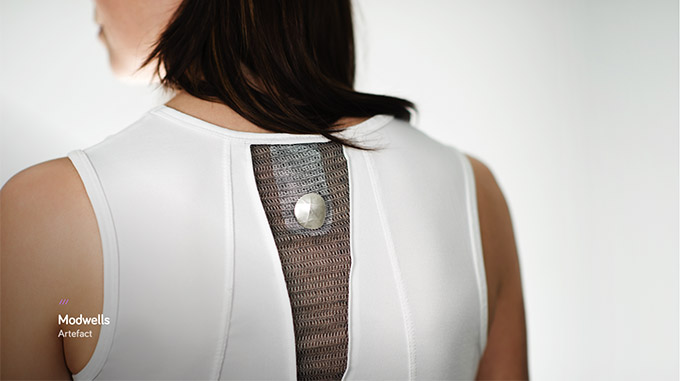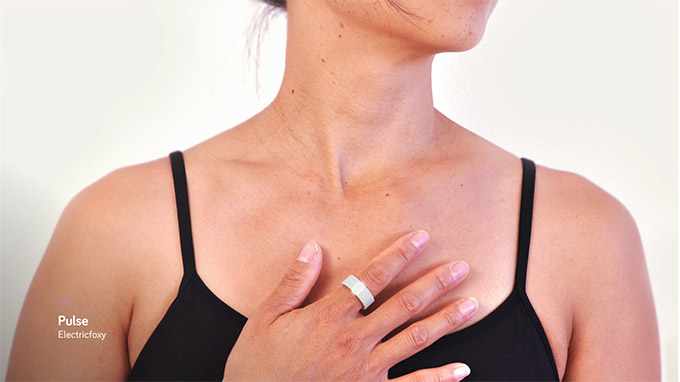Wearable technology is the next new wave of technology, and it’s bound to drive a lot of the innovation in the consumer electronics industry. We can expect to see a lot more watches, glasses, fitness gadgets, and wristbands in the years to come. But bear in mind that we’re in the “brick phone” phase, or version 1.0, of wearable tech. In these early days, we’re approaching wearables with a traditional CE mentality--it’s all about making a powerful gadget that we can bolt onto our bodies without considering the new aspects of what it means to wear, rather than carry, something. And if we are not careful, we will be on our way to becoming cyborgs: bolting gadgets onto our bodies will distract, disrupt, and disengage us from others, ultimately degrading our human experience.
The real opportunity is for wearable technology to enhance the human experience by seamlessly integrating the technology into the fabric of our lives. I use “fabric” deliberately, not just as a reference to the world of e-textiles but to the ample set of considerations that encompass our lifestyle. As an inventor and designer of wearable technology for the last decade, I think we need to consider several key building blocks to achieve this.
1. Make it beautiful
Until recently, in the technology industry the idea of aesthetic value was often considered secondary and sometimes controversial. Yet fashion and aesthetics are important when you start wearing the product on your body--it becomes a part of our identity and a mode of self-expression; it evokes certain perceptions in others and starts to define us. That is why beauty is essential to wearables.
Our goal should be to create iconic and timeless forms that are beautiful and help us communicate who we are. In my concept, Modwells, the modular sensors that track your biometrics are like jewels that you can attach to your clothing. Misfit Wearables is taking a similar approach. We also need to take into account the context of the situation--something that we would gladly wear at the gym would not fit in at a cocktail party, so finding the right balance between aesthetics, functionality, and context is key.

One way to achieve beauty is to hide the technology, and an emerging breed of flexible and softer materials is making that easier than ever. I have experimented with stretch sensors in Move, my concept garment that helps people achieve the precision of movement required in Pilates by tracking and adjusting their movements. As with Angella Mackey’s Vega biking jacket, the technology is incorporated in a way that transforms the function into the aesthetic.
Striving for invisibility should not be a goal in and of itself. While invisibility might be preferable for clothes that aim at improving you, if the product’s goal is to change how you interact with others, we have to take into account social norms, personal boundaries, and privacy.
2. Make it peripheral
In the era of wearable technology, we are moving away from interacting with the technology; it interacts with us instead. This is an important paradigm shift--the body becomes the interaction platform: the mouse and the screen.
Up until now, in order to interact with our smartphones or Fuel Band, we’ve had to look at them and start the display. With wearable technology, we can do these things more seamlessly by using the peripheral space to create new interaction models. We can also move beyond our face and arms and use our bodies like the GPS shoes by Dominic Wilcox, which use light to indicate where to go. While they still rely on visual cues and could have used haptic feedback to let you know when to turn right or left, I do think they are a step in the right direction (pun intended).
Beyond receiving information, we can also use the periphery to send signals. (See the diagram at the top of this page.) Zip is a garment that ties the gestures we normally use to interact with our clothing with controls. For example, zipping the jacket adjusts the volume of music. What is important when designing these new interaction models is that we do not simply translate old metaphors from the computer era but consider the context, proximity, and social situations in which these interactions will occur.

3. Make it meaningful
Wearing devices that are always tracking our activity produces a huge amount of data. But, as any Big Data expert would tell you, the question is what we do with all that data. Merely displaying the information, however beautifully we do that, misses the chance to influence positive behavior.
Instead of simply displaying your biometric readings like your heart rate, we can nudge positive behaviors right in the moment. Jawbone Up is doing this nicely: It sends a tiny vibration when you have not moved for a while to remind you to get up. I used this concept in Pulse, the ring that tracks your heart rate. By itself, your heart rate doesn’t really mean anything; you need to know what to do with it. Pulse uses color to indicate when to cool down and when to speed up so that you can stay in the optimal heart-rate zone while working out. The other advantage of using color instead of a number is how readable it is. You can get the information in less than a second, which does not disrupt your workout (again, the importance of periphery).

Meaningful products enable us to do something better. They help us achieve better posture in Pilates, or stay within our optimum exercise zone; they connect us to those we love or empower us to be more responsible, healthier, smarter. To achieve this, we must go beyond the fad of just quantifying ourselves. Instead we should use the data to prompt us to act in a way that makes us healthier, stronger, better--a principle of 21st-century design.
What's next?
Today’s wearable technology products are mainly in the fitness space, but this is just the tip of the iceberg. Wearable tech will start permeating many other domains, including medical, entertainment, security, financial, and more. The more pervasive it becomes, the more important it is to advocate for products that are beautiful, peripheral, and meaningful. Only then will wearable technology achieve its full potential to enhance our lives, rather than disrupt, disconnect, and distract us.
Continue reading and also published on FastCompany's Co.Design.